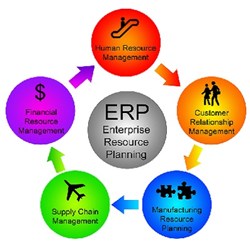Improving Visibility And Traceability With Cloud-Based ERP Systems
By Melissa Lind, contributing writer

The focus in the food industry has shifted from response to prevention, with regulations mirroring that shift. Consequently, food makers are under increasing demands to tighten traceability and visibility in the supply line.
Now, more than ever before, food processors and producers must be on their toes when it comes to efficiency in operations. With increased regulations, the food industry is now subject to a number of regulatory agencies and guidelines, including the demands of the most-recently enacted requirements of FSMA. In the past, home-grown data and quality-assurance management processes were considered adequate to address food contamination and other events. However, in today’s fast-paced environment — with an ever-expanding audience of both vendors and customers — your company can’t afford to rely on paper, or even on an old data-population program.
You and your company need to be 100 percent confident that systems in place are adequate in terms of accuracy. Accompanying that notion, compliance, traceability, and supply-chain visibility should be top priorities. Success means being quick on your feet with efficient operations so that in the event of a crisis, your company can respond immediately and effectively.
Old systems, and ones already in place, may seem like a cost-saving measure, and while investment in newer technology can be a significant cost, inefficiencies in older technology may actually be costing your company money. These costs can be significant in terms of the time it takes to operate the system and in the damage that can be done if you can’t react. The good news is that newer, integrated systems can increase efficiency — both with simple tasks, such as prepopulation of vendor and customer data — and with more complex tasks of traceability and visibility in your company’s supply chain.
Many industries, including the food industry, are benefiting from the development of integrated management platforms and tools. Programs based on a “dashboard” system can help handle traceability and ensure compliance to rapidly identify the source of issues. They also respond effectively and efficiently to any level of event, whether it is a simple customer complaint of late delivery or a more serious food-contamination event.
When considering a new investment in traceability and visibility management technology, “one-size fits all” isn’t the best approach. Ideally, all systems could be integrated for complete visibility from harvest to table, but that possibility isn’t likely. So, at a minimum, the potential system being invested in needs to integrate across all of your company’s functions, ensuring visibility one level up and one level down for both vendors and customers.
Manual spreadsheets and cumbersome windows-based processes may need to be tossed in the move to a more modern, cloud-based technology. Current ERP software is often easy-to-learn and easy-to-use, making the transition as painless as possible. Such technology isn’t required by regulations, but the problems it solves are required to be addressed and the need for solutions right now will only get more intense with the expansion of the food-supply chain and as regulations continue to become more stringent. The cost of implementing a new, integrated IT solution will be offset by increased efficiency and responsiveness to both, customer and regulatory concerns, maintaining brand loyalty and ensuring compliance.
